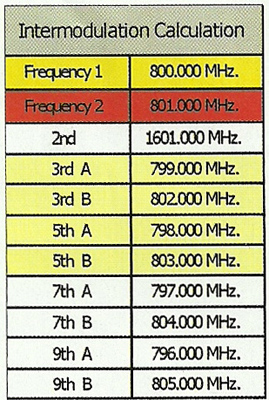Using radio frequency (RF) wireless microphone transmitters with the right amount of RF output power is important to ensure total system reliability.
There is a common misconception that higher power is better.
However, in many applications high power can aggravate intermodulation (IM) distortion, resulting in audible noises.
First, the applied RF output power must fall within the limit allowed by each country’s legislation. In the U.S., the maximum RF output power for wireless microphones is limited to 250 mW. In most of the countries in Europe this figure is 50 mW, while in Japan it is only 10 mW.
Despite the 10 mW limitation, many multi-channel wireless microphones are operating in Japan. This is achieved by careful attention to factors like antenna position, use of low loss RF cables and RF gain structure of the antenna distribution system.
There are indeed some applications in which more RF output power is an appropriate measure; a perfect example would be a golf tournament; as the wireless system needs to cover a wide area. There are usually only a few wireless microphones in use at this type of function, and those microphones are generally not in close proximity to each other.
If transmitters with high RF power are close together, a process called intermodulation usually occurs. As soon as a non-linear component like a transistor is exposed to two or more Signals with sufficient strength, the non-linear device will be driven into saturation, resulting in harmonics that can interfere with your wanted wireless mic frequencies.
This kind of effect can be observed in every amplifier, including output amplifiers in a transmitter, antenna boosters and receiver input amplifiers.
At the same time, the RF noise floor in the medium – which in this case is the air – is increased. As a matter of fact, a transmitter in close proximity to another transmitter will not only transmit its own signal, but it will also receive the signal and add this to the RF amplifier stage.
The mathematical calculation of this phenomenon is (with two transmitters):
For the second harmonic:
Frequency 1 + Frequency 2 = Lower 2nd Intermodulation (IM2)
For the third harmonic:
2x Frequency 1 – Frequency 2 = Lower 3rd Intermodulation (IM3)
2x Frequency 2 – Frequency 1 = Upper 3rd Intermodulation (IM3)
















